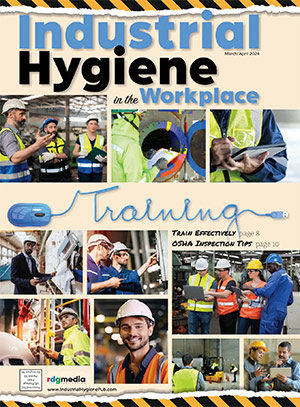NFPA 350 Guide for Safe Confined Space Entry & Work
Confined spaces are challenging working environments. Identifying the hazards involved then taking proactive steps to prevent them and minimize risks is paramount. Minimizing risks starts with knowing who’s inside a confined space, for how long, and monitoring the atmospheric conditions within it. This guide outlines many of the best practices we recommend with our own connected safety solution for gas detection and emergency response. www.blacklinesafety.com, 877-869-7212.
Background Information
NFPA 350 is a guide that was developed for workers who enter confined spaces for inspection, testing or associated work and to protect them from death, injuries or illnesses. The NFPA 350 Guide for Safe Confined Space Entry & Work provides information to protect workers from confined space hazards. This guide supplements existing confined space regulations, standards and work practices by providing additional guidance for safe confined space entry and work. References are provided throughout the guide, as well as annexes to direct the reader to other regulations and standards or other applicable content.
Also provided in the guide is information to identify, evaluate, assess; and then eliminate, mitigate or control hazards that are present or that may occur during entry into or work in and around confined spaces. It provides information on how to understand confined space safety and safeguard personnel from fire, explosion and other health hazards that are uniquely associated with confined spaces, as well as the training, qualifications and competencies required for personnel responsible for confined space hazard identification, hazard evaluation and hazard control.
Reducing Terminology Overload
 One often confusing aspect of confined space safety is the terminology used by safety professionals and regulators to describe confined spaces. The terms “confined space” and “non-permit confined space” are too often used interchangeably to describe a confined space where no hazards are present. However, this same space might become a “permit-required confined space” if used by an employee welding or painting within it.
One often confusing aspect of confined space safety is the terminology used by safety professionals and regulators to describe confined spaces. The terms “confined space” and “non-permit confined space” are too often used interchangeably to describe a confined space where no hazards are present. However, this same space might become a “permit-required confined space” if used by an employee welding or painting within it.
The guide states:
“It is well-recognized that changes that occur during confined space work can negatively affect confined space entry and work safety. NFPA 350 outlines the types of changes that can occur during confined space work and provides a method for reporting and managing those changes through a
management-of-change system.”
Therefore, because the type of space can change daily, depending on what type of work is being done inside the space, NFPA 350 uses the term “confined space” throughout the document, instead of renaming a space based on the presence or absence of a hazard. All spaces that meet the OSHA definition of a confined space are referred to simply as “confined spaces” in NFPA 350.
Another issue that causes confusion is that OSHA allows for three types of permit-required confined space entries, depending on the hazards:
- Alternate procedures entry
- Reclassification to non-permit confined space
- Full permit entry
The procedures and requirements are different for each of these three different entries. NFPA 350 attempts to clarify this confusion by stating that three things should be present for all confined spaces:
- Pre-entry evaluation for all confined spaces
- Use one form: Pre-entry Evaluation/Permit
- All entries undergo the same evaluation
The reclassification of alternate procedures is important, because it calls all confined spaces by the same term, and it requires a pre-entry evaluation for all spaces. This means the hazard (if present) can be identified and controls required can be addressed—without worrying about terminology. A signed form that is required for alternate procedures and reclassification is essentially now the pre-entry evaluation permit form.
Why Standard Matters
Documentation of confined space fatalities, while not complete, has estimated approximately 90-100 worker deaths, per year, from the mid-1990s through about 2010—despite regulations. However, the numbers are increasing. The most recent Census of Fatal Occupational Injuries published by the Bureau of Labor Statistics showed that 148 workers were killed in incidents associated with confined spaces in 2018. This is an alarming statistic, as it has increased steadily since 2011, when there were 120 fatalities in this area.
Communication & Monitoring
Confined space communication begins well before anyone actually enters the space itself. It starts with proper understanding of the hazards and risks that someone might encounter when working inside the space.
The NFPA 350 Guide to Safe Confined Space Entry and Work says that communication is a “vital, reiterative part of reducing hazards” in confined space entry operations. Hazards are identified and communicated during job hazard assessments and can also be communicated through other resources, such as Safety Data Sheets (SDS) that identify substances that might be found inside a space; blueprints and schematics that communicate information about the construction and equipment that may be in the space; and posted placards and markings that provide entrants with specific warnings about the space. NFPA 350, Sec. 7.13.1 states that “the atmosphere within and outside the confined space should be monitored continuously to ensure continued safe working conditions.”
Resources:
- NFPA 350, Guide for Safe Confined Space Entry and Work can be viewed on the document information page at nfpa.org/350. This page includes a free, downloadable fact sheet and five-minute video, as well as an online training series and information about on-site training.
- All NFPA documents are available for viewing, free of charge, by going to NFPA’s website at www.nfpa.org/[document number]. All guides are also available to purchase on the website.
- Go to https://www.bls.gov/iif/oshwc/cfoi/confined-spaces-2011-18.htm for the most recent Census of Fatal Occupational Injuries Fact Sheet published by the Bureau of Labor Statistics regarding confined space injuries and fatalities.
Share on Socials!
Central Dust or Fume Collection System Triad
Improving Workplace Safety with Wearable Technology
Listen Up! A note from NHCA
Leaders in Industrial Hygiene
Council for Accreditation in Occupational Hearing Conservation (CAOHC)
Subscribe!
Sign up to receive our industry publications for FREE!









